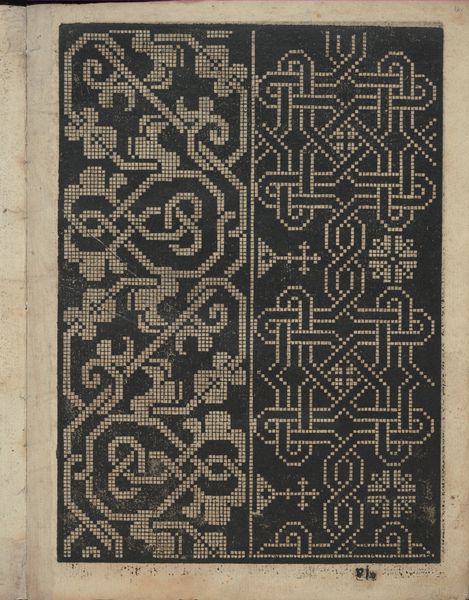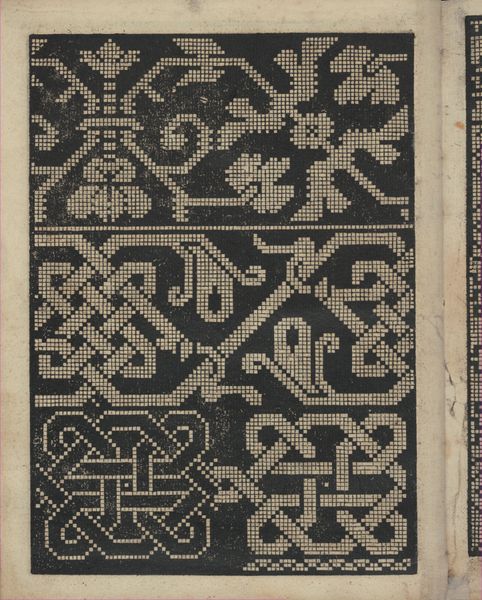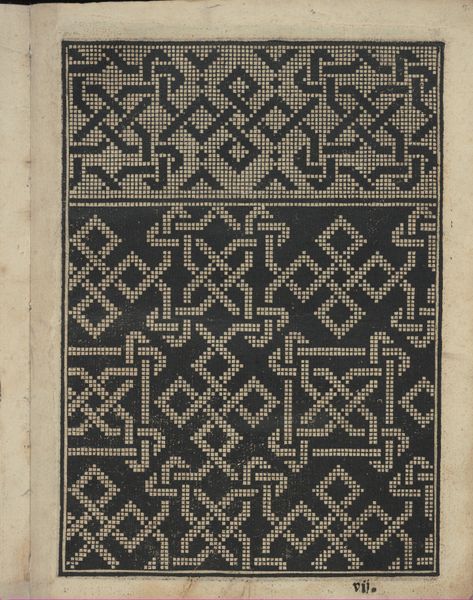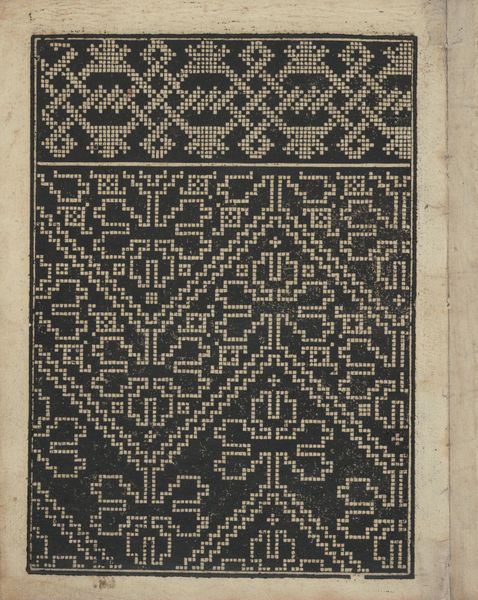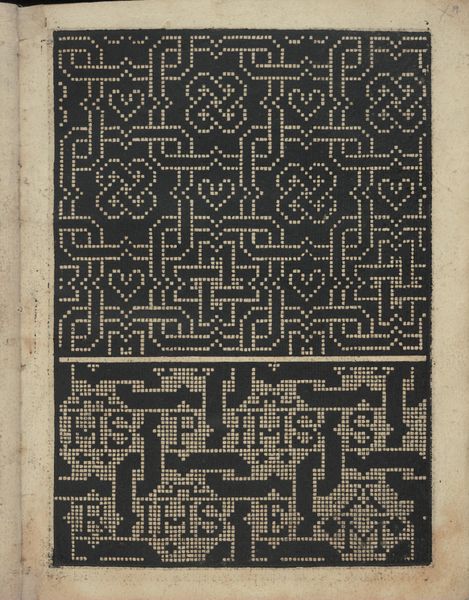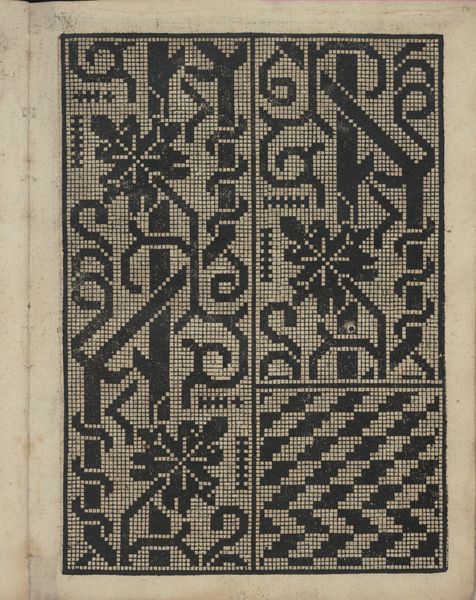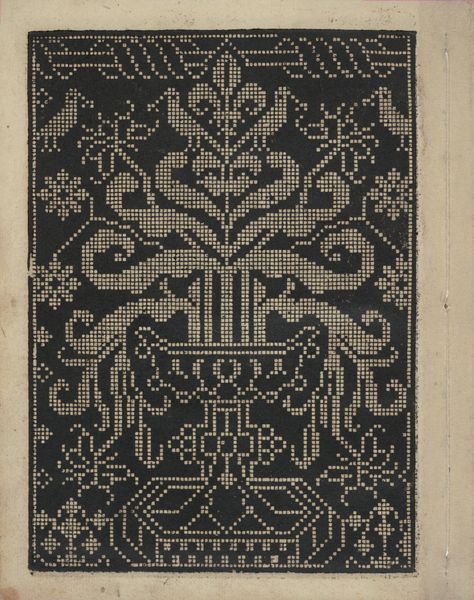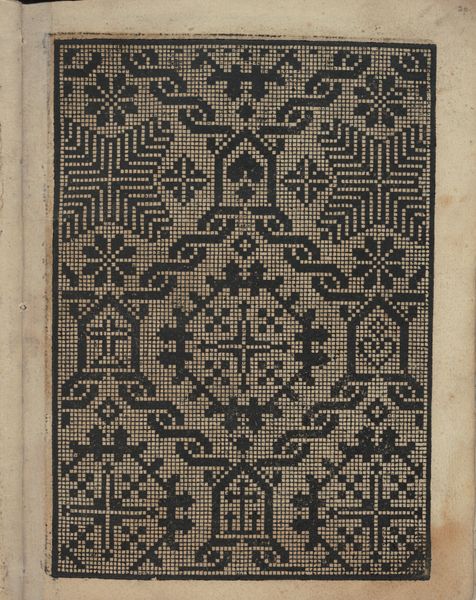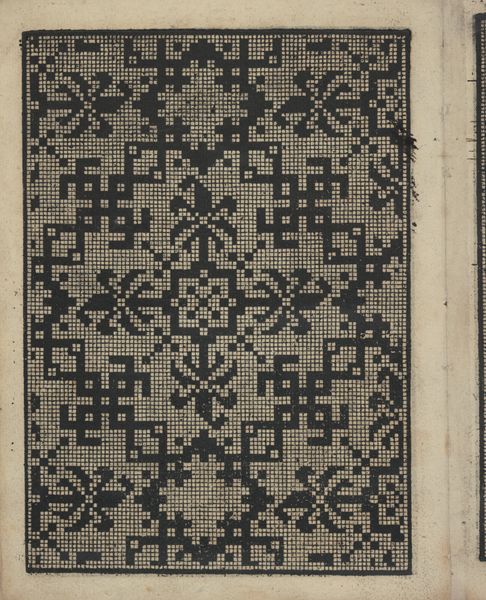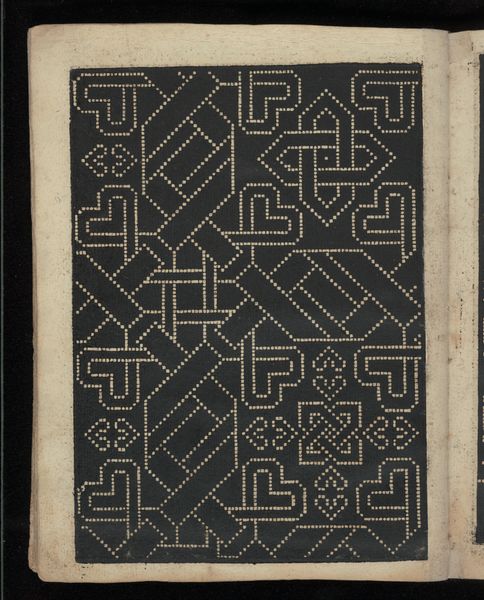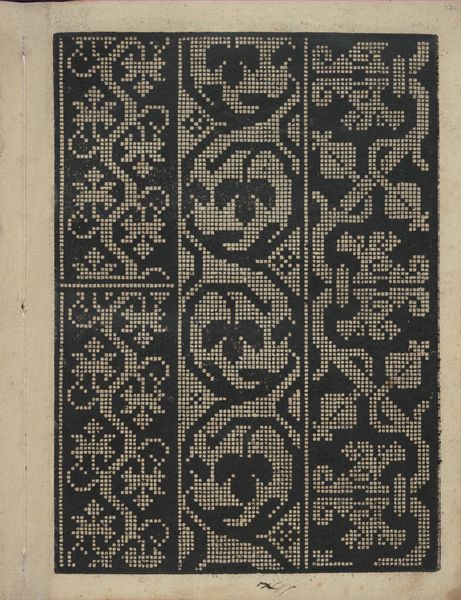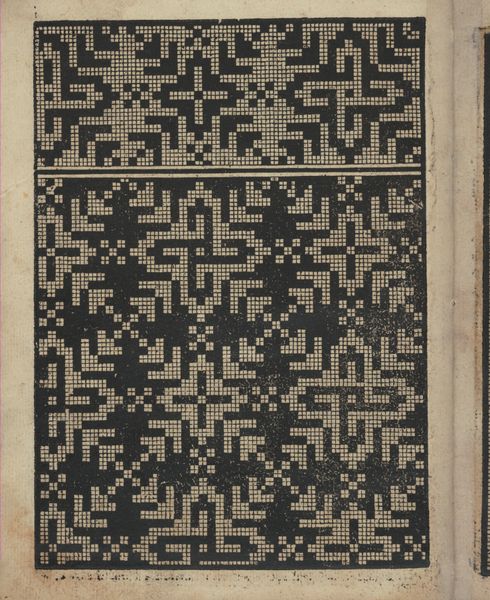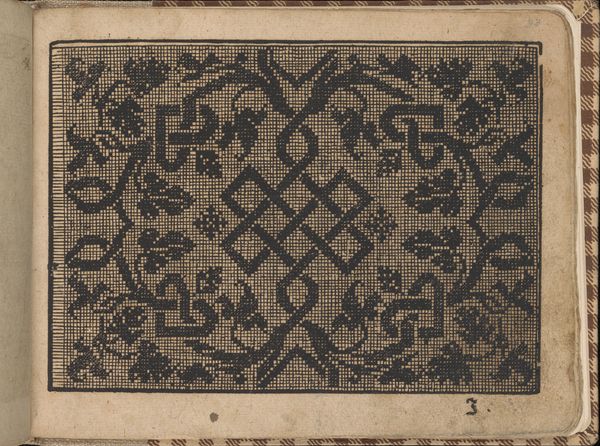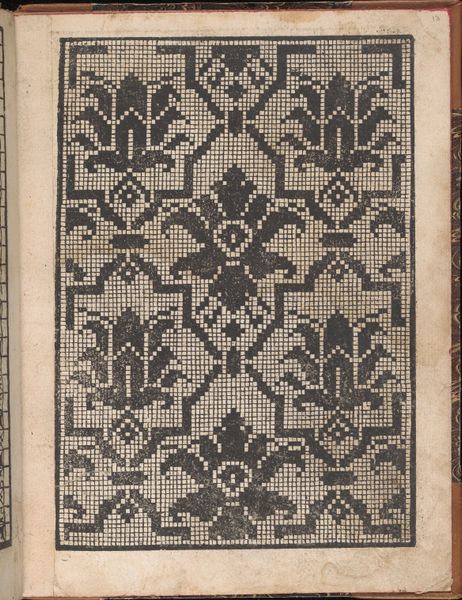
Libbretto nouellamete composto per maestro Domenico da Sera...lauorare di ogni sorte di punti, page 17 (verso) 1532
0:00
0:00
drawing, print
#
drawing
# print
#
book
#
pattern
#
geometric
#
repetition of pattern
#
italian-renaissance
Dimensions: Overall: 8 1/16 x 6 5/16 in. (20.5 x 16 cm)
Copyright: Public Domain
Curator: Looking at this densely patterned page, I’m struck by the intensity of the black and white contrast. The geometric forms seem to vibrate on the page. Editor: This is page 17 from *Libbretto nouellamete composto per maestro Domenico da Sera...lauorare di ogni sorte di punti*, a print created by Domenico da Sera in 1532. It resides here at The Met. Curator: 1532. So, squarely within the Italian Renaissance. And what an intriguing object. A manual, essentially, offering patterns for needlework. Who was its intended audience, and what does this say about the place of women and domestic crafts in Renaissance society? Were these patterns accessible across class lines, or did they become another marker of status? Editor: Excellent points. We could delve into that socio-economic terrain. But let’s not overlook the power of this visual arrangement. Each small square contributes to a greater geometric framework. It presents a microcosm of visual organization—symmetry, repetition, and variation working in careful harmony. Note how individual motifs build up to the overall schema. Curator: Absolutely. But consider also how these patterns—seemingly decorative—were in fact instruments of empowerment for women. Needlework was not merely a pastime, but a means of self-expression, storytelling, and even, subtly, of challenging societal norms through coded symbols or personal embellishments. This book becomes more than just a collection of designs; it's a silent witness to the lives and creative agency of women. Editor: A fascinating perspective. I still think the rigorous deployment of pattern creates a sense of stability, even rigidity. Consider the interplay between positive and negative space: how the balance achieves resolution across the composition. The artist achieves compelling tension between stasis and flow using very simple shapes. Curator: A rigidity perhaps reflecting the constraints placed upon women, yet countered by the act of creation itself? These repeated motifs were not mere echoes but iterative explorations offering pathways for inventive variation. The print offered direction, and liberated women's voices. Editor: It also shows us the possibilities for complexity available within limitation. Thanks to the framework offered by Sera, we both came to richer understandings.
Comments
No comments
Be the first to comment and join the conversation on the ultimate creative platform.
